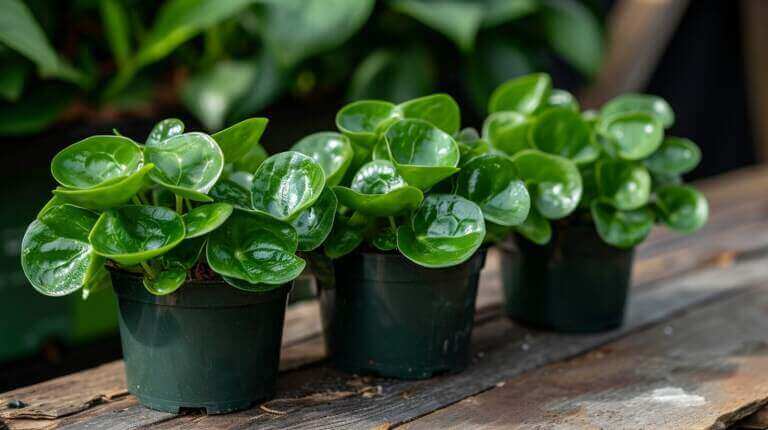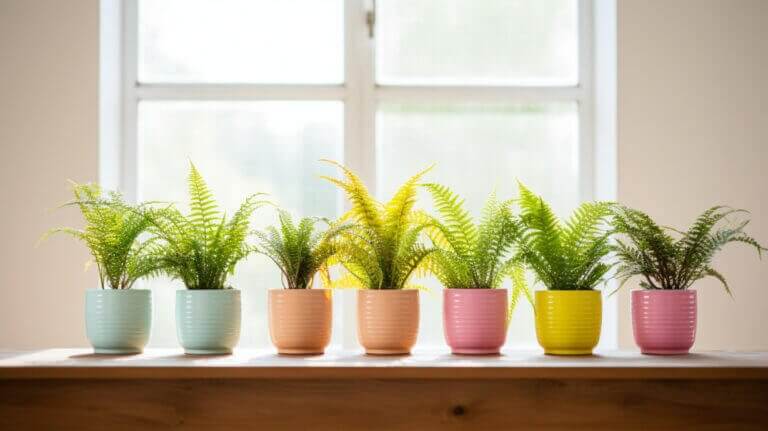Repot A Venus Flytrap: When to Transplant and How to Do It Right
Venus flytraps, with their unique carnivorous nature, require regular repotting to ensure optimal growth and health. In this article, I will guide you on when and how to repot these intriguing plants, so you can provide them with the ideal conditions for thriving.
Key Takeaways:
- Regular repotting is essential for the growth and health of Venus flytraps.
- Transplanting is best done in the spring or early summer after winter dormancy.
- Newly purchased Venus flytraps should be repotted to remove impurities and ensure the correct potting medium.
- The ideal soil mixture for Venus flytraps is a 1:1 combination of unenriched peat moss and perlite.
- Plastic pots with a minimum depth of 4 inches are recommended.
Choosing the Right Soil and Potting Medium
When it comes to repotting Venus flytraps, selecting the proper soil and potting medium is crucial for their health and well-being. Using the right mixture will ensure that these carnivorous plants thrive in their new environment. One recommended option is Venus flytrap potting soil, specifically formulated for the unique needs of these plants. This specialized soil mixture can also be created by combining equal parts of unenriched peat moss and perlite.
Peat moss provides the necessary acidity for Venus flytraps, mimicking their natural boggy habitat, while perlite helps with moisture retention, ensuring the plants receive the right amount of water. Both components are widely available and can be purchased separately or as pre-mixed Venus flytrap potting soil. It’s important to avoid using standard potting soil or mixtures with added fertilizers, as these can harm the plants.
When choosing the right soil and potting medium, consider visiting local gardening stores like Home Depot, Walmart, or B&Q, where you can find a variety of options suitable for Venus flytraps. Alternatively, you can check online retailers for convenient delivery options. Ensure that the soil and potting medium you select are specifically designed for carnivorous plants, as this will provide the best conditions for their growth and development.
Table: Example Retailers for Venus Flytrap Soil
| Retailer | Availability |
|---|---|
| Home Depot | Available in-store and online |
| Walmart | Available in-store and online |
| B&Q | Available in-store and online |
Proper Repotting Techniques
Successfully repotting a Venus flytrap is a crucial step in ensuring the plant’s health and continued growth. By following a few easy steps, you can repot your Venus flytrap without any hassle or risk to the plant. Here is a simple guide to help you through the repotting process:
Step 1: Selecting the Right Pot and Soil Mixture
When repotting a Venus flytrap, start by choosing a slightly larger pot than the current one. Plastic pots with a minimum depth of 4 inches are recommended to accommodate the plant’s root system. Next, prepare the soil mixture by combining unenriched peat moss and perlite in a 1:1 ratio. This mixture provides the necessary acidity and moisture retention for the plant.
Step 2: Preparing the New Pot
Fill the new pot with the soil mixture and gently water it to moisten the soil. Create a small hole in the center of the mixture where the Venus flytrap will be placed.
Step 3: Repotting the Venus Flytrap
Take the Venus flytrap out of its current pot by carefully handling the root ball. Avoid touching or damaging the traps as it can waste the plant’s energy. Remove the old potting medium from the roots and separate multiple plants if necessary. Place the plant into the hole you created in the new potting mixture, making sure that the rhizome is placed underground and the traps are above ground. Pat the soil around the roots firmly but gently. Water the plant thoroughly, allowing the water to drain out of the pot.
After repotting, it is normal for the plant to experience a temporary stall in growth or loss of traps. As long as the rhizomes and roots are healthy, the plant will recover and continue to thrive in its new pot.
Table: Steps to Repot a Venus Flytrap
| Step | Description |
|---|---|
| 1 | Select a slightly larger pot and prepare the soil mixture with unenriched peat moss and perlite. |
| 2 | Fill the new pot with the soil mixture and water it to moisten the soil. |
| 3 | Remove the Venus flytrap from its current pot, being careful not to damage the traps. |
| 4 | Separate multiple plants and place the Venus flytrap in the new pot, with the rhizome underground and the traps above ground. |
| 5 | Pat the soil around the roots and water the plant thoroughly. |
Following these simple steps will ensure a successful repotting process for your Venus flytrap. Remember to repot the plant annually or whenever the current pot becomes too small to accommodate its growth. With proper repotting techniques, your Venus flytrap will continue to flourish and bring you joy for years to come.
When Not to Repot a Venus Flytrap
While regular repotting is essential for the health and growth of Venus flytraps, there are certain situations when repotting should be avoided.
If your Venus flytrap is already in a suitable pot size and the current soil mix is providing adequate nourishment, repotting may not be necessary. Assess the plant’s root system and overall condition to determine if it requires repotting or if it can continue thriving in its current pot.
It is also important to avoid repotting a Venus flytrap during its active flowering period. Repotting disturbs the plant’s root system and can hinder its ability to produce blooms. Wait until the flowering period has ended to carry out any necessary repotting.
When repotting a Venus flytrap, it is crucial to use the correct potting medium. Avoid using non-premium long-fiber sphagnum moss or sphagnum moss of poor quality as these can harm the plants. Instead, opt for unfertilized peat moss or premium long-fiber sphagnum moss without mineral additives. This ensures the plant receives the proper nutrients and moisture retention it requires for healthy growth.
FAQ
When is the best time to repot a Venus fly trap?
The best time to repot a Venus fly trap is during its dormant period, typically in the late winter or early spring. This gives the plant time to adjust to its new pot before the growing season begins.
How do I repot my Venus flytrap?
To repot your Venus flytrap, gently remove it from its current pot, taking care to keep the plant intact. Remove any old soil from the roots, then make a hole in the center of the new pot filled with carnivorous plant soil. Place the plant in the hole and gently cover the roots with more soil.
What type of potting mix should I use for my Venus flytrap?
Venus flytraps prefer a specific type of potting mix, often referred to as carnivorous plant soil. This mix is typically acidic and nutrient-poor, mimicking the natural bog environment where these plants grow.
What type of pot should I use for my Venus flytrap?
Choose a pot with drainage holes at the bottom. The pot should be at least 4 inches deep to accommodate the plant’s roots. A terrarium can also be used for growing Venus flytraps indoors.
How do I care for my Venus flytrap after repotting?
After repotting, give your plant plenty of purified water (rainwater or reverse osmosis water is best, as tap water can be harmful). Keep the plant in a location that meets its growing conditions – plenty of sunlight and high humidity.
Can I replant my Venus flytrap in a bigger pot?
Yes, you can replant your Venus flytrap in a bigger pot. Just ensure the pot has good drainage and is filled with the appropriate potting mix. Remember, the plant’s roots should be about 2 inches below the surface of the soil.







